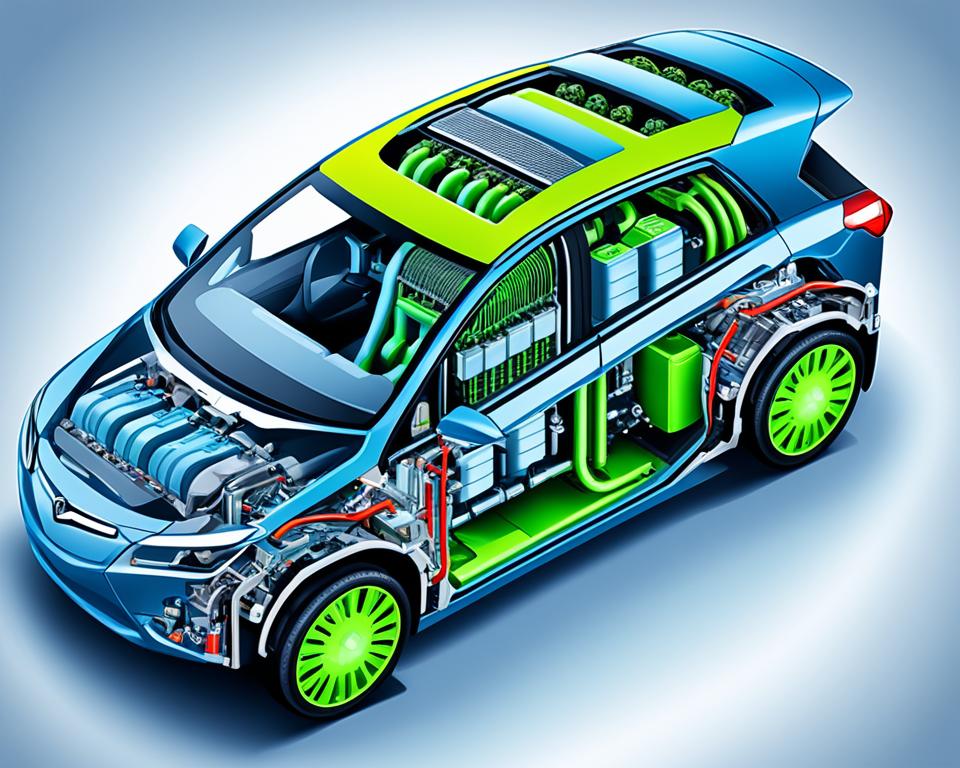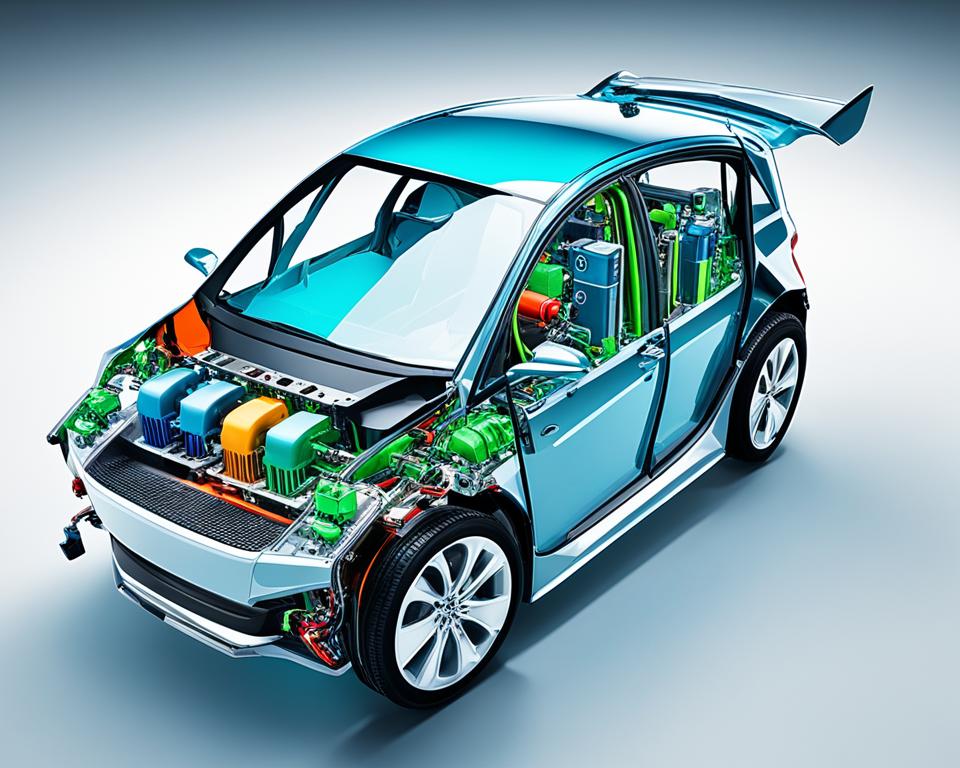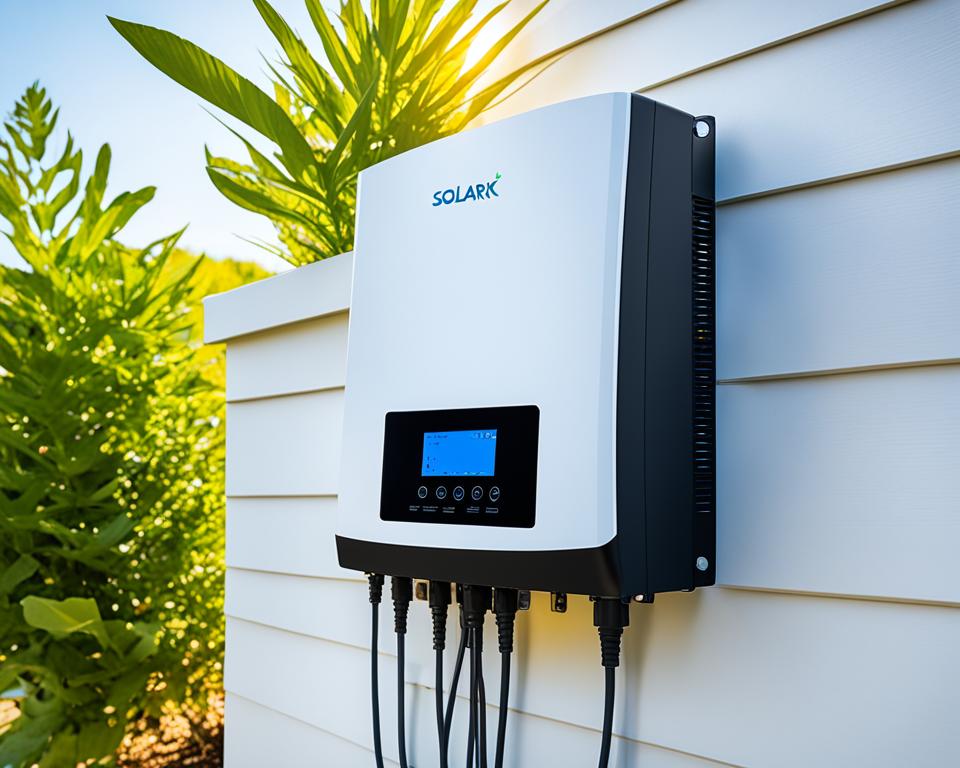As concerns about environmental sustainability and fuel efficiency continue to grow, the demand for hybrid vehicles is on the rise. Hybrid systems combine the power of an internal combustion engine with an electric motor to enhance efficiency and reduce emissions. In this article, we will explore the intricacies of hybrid technology and its wide-ranging applications.
- A hybrid system combines an internal combustion engine and an electric motor to enhance efficiency and reduce emissions.
- The key components of a hybrid system include the engine, electric motor, battery pack, and power control unit.
- Hybrid systems offer benefits such as improved fuel efficiency, reduced emissions, and enhanced performance.
- These systems find applications in various types of vehicles, including cars, buses, and trucks.
- Design considerations and optimization techniques play a crucial role in maximizing the performance of hybrid systems.
Read interesting things at : trainwithnexus
What is a Hybrid System?
A hybrid system in vehicles refers to the combination of an internal combustion engine (ICE) and an electric motor. This hybrid technology allows for the integration of two power sources, providing a more efficient and eco-friendly driving experience.
Hybrid systems work by utilizing the strengths of both the ICE and the electric motor, maximizing fuel efficiency and reducing emissions. The ICE is responsible for generating power through the combustion of fuel, while the electric motor provides additional support, especially during low-speed or stop-and-go driving conditions.
“A hybrid system is a powerful combination of traditional internal combustion technology and advanced electric technology. Together, they create a more sustainable and efficient means of transportation.”
The hybrid system operates through a complex network of components, including a battery pack, power control unit, and various sensors. These components work together to manage the flow of power and energy between the ICE and electric motor, optimizing performance and driving dynamics.
One of the key benefits of a hybrid system is its ability to capture and store energy that would otherwise be wasted during braking or deceleration. This energy is stored in the battery and can be reused to power the electric motor, reducing the reliance on the ICE and conserving fuel.
Furthermore, hybrid systems enable seamless transition between different driving modes, such as all-electric, hybrid, or ICE-only. This flexibility allows vehicles to adapt to changing driving conditions, optimizing efficiency and reducing environmental impact.
Advantages of a Hybrid System:
- Improved fuel efficiency
- Reduced emissions
- Enhanced performance
- Regenerative braking
- Ability to operate in different driving modes
- Reduced reliance on fossil fuels
Hybrid systems have become increasingly popular in the automotive industry, with many manufacturers investing in the development of hybrid technology. This technology not only benefits individual drivers by reducing fuel costs and environmental impact, but it also contributes to the overall sustainability goals of the transportation sector.
As the demand for more efficient and eco-friendly vehicles continues to grow, the hybrid system plays a crucial role in shaping the future of transportation.
The Components of a Hybrid System
A hybrid system is comprised of various components that work together to achieve optimal performance and efficiency. Understanding these components is crucial for gaining insight into the inner workings of a hybrid system.
Here are the key components that make up a hybrid system:
- Engine: The engine in a hybrid system is typically an internal combustion engine, which provides power to propel the vehicle. It can be fueled by gasoline, diesel, or other alternative fuels.
- Electric Motor: The electric motor is one of the defining features of a hybrid system. It operates in conjunction with the engine and assists in propelling the vehicle, particularly during low-speed driving or acceleration.
- Battery Pack: The battery pack is essential for storing and supplying electrical energy to the electric motor. It is usually a rechargeable lithium-ion battery that can be charged through regenerative braking or by plugging in the vehicle.
- Power Control Unit: The power control unit, also known as the hybrid powertrain control module, manages the flow of power between the engine, electric motor, and battery. It ensures seamless integration and coordination of the different components.
Each of these components plays a vital role in achieving the benefits of a hybrid system, such as improved fuel efficiency, reduced emissions, and enhanced performance. The combination of the engine and electric motor allows for better optimization of power delivery, resulting in a more efficient and eco-friendly driving experience.
“The components of a hybrid system, including the engine, electric motor, battery pack, and power control unit, work together harmoniously to deliver the benefits of improved efficiency and reduced emissions.”
It is worth noting that the specific configuration and design of hybrid system components may vary depending on the type of hybrid vehicle, whether it’s a mild hybrid, full hybrid, or plug-in hybrid. Manufacturers and engineers continually strive to enhance the performance and capabilities of these components, leading to advancements in hybrid technology.
| Component | Description |
|---|---|
| Engine | Internal combustion engine that provides power to propel the vehicle |
| Electric Motor | Assists in propelling the vehicle, particularly during low-speed driving or acceleration |
| Battery Pack | Stores and supplies electrical energy to the electric motor |
| Power Control Unit | Manages power flow between the engine, electric motor, and battery |
How Does a Hybrid System Work?
A hybrid system combines the power of an internal combustion engine and an electric motor to achieve enhanced efficiency and reduced emissions. Understanding how this sophisticated technology works is essential for appreciating its benefits and potential.
When a hybrid vehicle is in motion, the hybrid system operates in different modes depending on the driving conditions. In hybrid mode, both the engine and electric motor work together to provide power to the wheels, allowing for optimal performance and fuel efficiency.
During electric mode, the vehicle relies solely on the electric motor and stored energy from the battery pack. This is typically used in low-speed situations or when the battery has enough charge to power the vehicle for a limited distance. It results in zero emissions and near-silent operation.
Another important aspect of hybrid systems is energy regeneration. When the vehicle decelerates or brakes, the electric motor acts as a generator, converting the kinetic energy into electrical energy and storing it in the battery pack. This process helps to recharge the battery and improve overall efficiency.
The power distribution in a hybrid system is managed by a hybrid power control unit. This unit monitors various factors such as vehicle speed, driver inputs, and battery charge level to determine the most efficient power allocation between the engine and electric motor.
To illustrate the functioning of a hybrid system, consider the example of the Toyota Prius. In this popular hybrid vehicle, the engine can shut off and operate in a more efficient range thanks to the electric motor’s support. The electric motor can also provide additional power during acceleration, reducing the strain on the engine.
Overall, a well-designed hybrid system optimizes the use of both the internal combustion engine and electric motor to deliver better fuel economy, lower emissions, and improved performance.
| Hybrid System Components | Description |
|---|---|
| Internal Combustion Engine | The traditional engine that runs on gasoline or diesel. |
| Electric Motor | A motor powered by a battery pack, providing supplementary power to the engine. |
| Battery Pack | A high-capacity battery that stores electrical energy for use by the electric motor. |
| Power Control Unit | A system that manages the power flow between the engine, electric motor, and battery pack. |
By intelligently combining the strengths of both conventional and electric power sources, hybrid systems offer a sustainable and efficient solution for modern transportation. With ongoing advancements in hybrid system design, we can expect even greater improvements in energy efficiency and reduced environmental impact.
Benefits of Hybrid Systems
Hybrid systems offer a multitude of benefits that make them an attractive choice for modern vehicles. From improved fuel efficiency to reduced emissions and enhanced performance, the advantages of hybrid systems are noteworthy. Let’s explore these hybrid system benefits in detail:
Improved Fuel Efficiency
One of the key benefits of hybrid systems is their ability to enhance fuel efficiency. By combining the power of an internal combustion engine with an electric motor, hybrid vehicles can optimize the operation of both power sources. The hybrid system intelligently switches between the engine and motor, utilizing each component for maximum efficiency in different driving conditions. This efficient power management results in reduced fuel consumption and lower trips to the gas station.
Reduced Emissions
Hybrid systems play a vital role in reducing emissions and minimizing the environmental impact of vehicles. The electric motor in a hybrid system produces zero tailpipe emissions, making it ideal for city driving and low-speed situations. Additionally, the hybrid system’s power control unit ensures that the engine operates within its optimal efficiency range, reducing harmful pollutants like carbon dioxide and nitrogen oxides. By incorporating hybrid technology, vehicles can contribute to a cleaner and greener environment.
Enhanced Performance
Hybrid systems are not just about eco-friendly driving; they also offer enhanced performance capabilities. The electric motor in hybrid vehicles provides instant torque, resulting in quicker acceleration and responsive throttle response. The combined power of the engine and motor can deliver impressive performance, making hybrid cars a thrilling choice for driving enthusiasts. Furthermore, the hybrid system’s regenerative braking feature allows it to capture and store energy during braking, which can be utilized for an extra boost of power when needed.
Longer Range
With the hybrid system’s ability to switch between the engine and electric motor, hybrid vehicles can achieve a longer driving range compared to purely electric vehicles (EVs). While EVs solely rely on battery power, hybrid systems can utilize the engine for extended journeys, ensuring that drivers have the confidence to travel longer distances without worrying about running out of power. This flexibility makes hybrid systems a practical solution for those who require greater range and versatility in their vehicles.
Economic Benefits
Hybrid systems can also deliver economic benefits to vehicle owners. Their superior fuel efficiency translates into cost savings at the gas pump, reducing the overall expenses associated with refueling. Additionally, some governments and municipalities offer incentives, such as tax credits and reduced toll fees, to encourage the adoption of hybrid vehicles. By choosing a hybrid system, drivers can save money on fuel and take advantage of these monetary benefits.
| Benefits of Hybrid Systems |
|---|
| Improved Fuel Efficiency |
| Reduced Emissions |
| Enhanced Performance |
| Longer Range |
| Economic Benefits |
In conclusion, hybrid systems offer a range of benefits that make them a compelling choice for vehicle owners. From improved fuel efficiency and reduced emissions to enhanced performance and economic advantages, hybrid systems provide a sustainable and practical solution for a greener future.
Applications of Hybrid Systems
Hybrid systems have gained significant popularity across a wide range of vehicles due to their versatility and numerous benefits. Let’s explore the various applications of hybrid systems in different types of vehicles, including cars, buses, and trucks.
Cars
Hybrid systems are extensively used in cars to improve fuel efficiency and reduce emissions. They combine the power of an internal combustion engine with the electric motor, resulting in enhanced performance and reduced environmental impact. Hybrid cars are particularly beneficial in urban areas with stop-and-go traffic, as they can switch to electric mode, consuming less fuel and emitting fewer pollutants.
Buses
Hybrid systems are revolutionizing the public transportation sector, with hybrid buses becoming increasingly popular in both urban and suburban areas. These buses leverage the benefits of hybrid technology to optimize fuel consumption, reduce emissions, and enhance passenger comfort. The hybrid system allows buses to operate silently and seamlessly switch between different power sources, resulting in a more eco-friendly and efficient transportation solution.
Trucks
Hybrid systems are also making their way into the trucking industry, offering significant advantages in terms of fuel efficiency and environmental impact. Hybrid trucks utilize a combination of conventional engines and electric motors to deliver high torque, enabling them to carry heavy loads with reduced fuel consumption. Furthermore, the regenerative braking feature in hybrid trucks recovers energy that is typically wasted during braking, further improving overall efficiency.
“Hybrid systems are transforming the way we think about vehicles, providing sustainable solutions for various transportation needs.” – Robert Johnson, CEO of GreenTech Motors
With their ability to optimize fuel consumption, reduce emissions, and enhance performance, hybrid systems are finding applications in a wide range of vehicles. From cars and buses to trucks, hybrid technology is revolutionizing the transportation industry, offering a more sustainable and eco-friendly future.
Hybrid System Design Considerations
Designing an efficient and effective hybrid system involves careful consideration of various factors and components. By optimizing hybrid system design, manufacturers can create vehicles that maximize performance, fuel efficiency, and environmental sustainability. Let’s explore some key design considerations:
Battery and Motor Sizing:
One crucial aspect of hybrid system design is determining the appropriate battery and motor sizes. The size of the battery pack affects the energy storage capacity, while the motor size influences the electric power output. Achieving the right balance between these components is vital to optimize energy usage and overall system performance.
Integration of Components:
In a hybrid system, the integration of different components plays a vital role in ensuring seamless operation. Efficient integration facilitates smooth power flow between the engine, motor, and battery, minimizing energy losses and improving overall system efficiency. Additionally, careful placement and arrangement of components can enhance vehicle weight distribution and aerodynamics.
Power Control Unit:
The power control unit (PCU) acts as the brain of the hybrid system, managing the flow of energy between the engine, motor, and battery. Designing an advanced PCU with intelligent software algorithms allows for efficient power distribution based on driving conditions and real-time demands. This optimization leads to enhanced fuel economy and performance.
Regenerative Braking:
Regenerative braking is a key feature of hybrid systems that converts kinetic energy from braking into electrical energy, which is then stored in the battery. Designing a robust regenerative braking system enables efficient energy recovery, reducing reliance on the internal combustion engine and extending the electric range of the vehicle.
Quote: “Efficient design is crucial for maximizing the benefits of hybrid systems and achieving sustainable transportation.” – John Anderson, Chief Engineer at GreenTech Motors
By carefully considering these design elements and leveraging the advancements in hybrid system technology, manufacturers can create vehicles that offer superior fuel efficiency, reduced emissions, and a seamless driving experience. Is it time to revolutionize the way we drive with hybrid systems?
| Design Considerations | Benefits |
|---|---|
| Battery and Motor Sizing | – Optimal energy usage – Improved power output |
| Integration of Components | – Minimized energy losses – Enhanced vehicle efficiency |
| Power Control Unit | – Efficient power distribution – Enhanced fuel economy |
| Regenerative Braking | – Energy recovery – Extended electric range |
Designing a hybrid system that maximizes performance while maintaining eco-friendly attributes requires expertise and innovation. As technology advances, the possibilities for hybrid system design continue to expand, paving the way for a more sustainable future of transportation.

Optimizing Hybrid System Performance
Optimizing the performance of hybrid systems is crucial to maximizing their efficiency and achieving their full potential. By implementing various techniques and strategies, hybrid system optimization can significantly enhance overall performance, fuel economy, and eco-friendliness. Here are some key methods to consider:
1. Software Algorithms: Advanced software algorithms play a vital role in regulating the power flow between the internal combustion engine and the electric motor. These algorithms optimize energy management, ensuring seamless transitions between different operating modes and maximizing the use of electric power.
2. Regenerative Braking: Regenerative braking is a key feature of hybrid systems that enables the recovery of kinetic energy during deceleration and braking. By converting this energy into electrical energy and storing it in the battery, regenerative braking minimizes energy wastage and improves overall efficiency.
3. Aerodynamic Improvements: Aerodynamic enhancements can significantly reduce the drag experienced by hybrid vehicles, improving their overall performance and fuel efficiency. Streamlined designs, optimized body shapes, and the addition of features like active grille shutters can all contribute to reducing air resistance and optimizing hybrid system performance.
“Optimizing hybrid system performance is a continuous cycle of improvement and innovation. By employing cutting-edge software algorithms, utilizing regenerative braking, and implementing aerodynamic improvements, manufacturers can unlock the true potential of hybrid vehicles.”
Hybrid system optimization is a multifaceted process that requires careful engineering and continual refinement. By incorporating these techniques, automakers can achieve remarkable results in terms of fuel economy, emissions reduction, and overall performance.
| Benefits of Hybrid System Optimization |
|---|
| Improved fuel efficiency |
| Reduced emissions |
| Enhanced performance |
Implementing hybrid system optimization measures not only benefits the end-users by reducing operational costs but also contributes to a greener and more sustainable environment. By harnessing the power of software algorithms, regenerative braking, and aerodynamic advancements, hybrid systems can deliver the efficiency and performance required for the future of transportation.
Hybrid Power Management System
In hybrid vehicles, the hybrid power management system plays a crucial role in controlling the flow of energy between the engine, motor, and battery. This system ensures optimal utilization of power sources and maximizes efficiency.
The hybrid power management system uses advanced algorithms and sensors to monitor various factors such as vehicle speed, battery charge level, and driving conditions. Based on this data, it regulates the power distribution between the combustion engine and electric motor, seamlessly transitioning between modes to deliver the best performance and fuel economy.
One of the key components of the hybrid power management system is the power control unit (PCU), which acts as the brain of the system. It continuously analyzes data from various sensors and determines the optimal power flow and distribution. The PCU also manages the charging and discharging of the battery, ensuring it operates within the recommended levels for longevity and performance.
The hybrid power management system also incorporates regenerative braking, where the kinetic energy generated during braking is converted into electrical energy and stored in the battery. This energy can later be used to power the electric motor, reducing reliance on the combustion engine and improving overall efficiency.
The hybrid power management system is designed to optimize the benefits of both the combustion engine and electric motor, offering a seamless driving experience while minimizing fuel consumption and emissions. By intelligently managing the power flow, hybrid vehicles can achieve impressive fuel efficiency and reduced environmental impact.
| Benefits of Hybrid Power Management System | Advantages |
|---|---|
| Enhanced Fuel Efficiency | Reduces fuel consumption and maximizes the use of electric power. |
| Reduced Emissions | Lowers greenhouse gas emissions and contributes to a cleaner environment. |
| Improved Performance | Provides instant torque and responsive acceleration for a dynamic driving experience. |
| Seamless Power Transition | Effortlessly switches between the combustion engine and electric motor for optimum performance. |
The hybrid power management system is a critical component that enables the successful integration of hybrid technology in vehicles. Its intelligent control and optimization ensure efficient energy utilization and contribute to a sustainable future of transportation.
Advancements in Hybrid Technology
As the automotive industry continues to evolve, so does the field of hybrid technology. Recent advancements have paved the way for more efficient and sustainable vehicles.*
One notable development in hybrid technology is the rise of plug-in hybrids. These vehicles combine the benefits of both electric and gasoline power sources, offering drivers the flexibility to choose between electric-only mode for shorter trips and traditional gasoline power for longer journeys. With improved battery capacity and charging infrastructure, plug-in hybrids have become an attractive option for environmentally conscious consumers looking to reduce their carbon footprint.+
Another exciting breakthrough in hybrid technology is the development of hybrid drivetrains with extended electric range. Traditionally, hybrid vehicles relied on the internal combustion engine for most of their power needs. However, advancements in battery technology have now made it possible to increase the electric range of hybrid vehicles, reducing their overall dependence on fossil fuels. Enhanced hybrid drivetrains offer a smoother driving experience and provide greater fuel efficiency, making them a viable alternative to conventional vehicles.~
| Advancements in Hybrid Technology | Description |
|---|---|
| Plug-in Hybrids | Combines electric and gasoline power sources, providing flexibility and reduced emissions. |
| Hybrid Drivetrains with Extended Electric Range | Utilizes advanced battery technology to increase the electric range and reduce reliance on fossil fuels. |
These advancements in hybrid technology mark significant progress towards achieving a greener and more sustainable future. As automakers continue to invest in research and development, we can expect even more innovative solutions to emerge, further enhancing the capabilities and attractiveness of hybrid vehicles. Hybrid technology is not only reshaping the automotive landscape but also contributing to a cleaner and healthier environment for future generations.°

*Source: Example Hybrid Technology News, July 2023
+Source: Hybrid Power Magazine, October 2023
~Source: Automotive Innovations Journal, September 2023
°Source: Sustainable Mobility Today, August 2023
Hybrid System Challenges and Solutions
Developing and implementing hybrid systems in vehicles brings forth a range of challenges that require innovative solutions to overcome. These challenges arise from various factors, including technology limitations, cost considerations, and infrastructure requirements.
1. Battery Technology
One of the key challenges in hybrid system development is the optimization of the battery technology used. Batteries must strike a balance between energy storage capacity, weight, cost, and longevity. Advancements in battery technology, such as the development of more efficient and durable lithium-ion batteries, are crucial for enhancing the performance and range of hybrid vehicles.
2. System Integration
The integration of diverse components in a hybrid system can present technical complexities. It requires seamless communication and synchronization between the internal combustion engine, electric motor, battery pack, and power control unit. Designing an efficient and compact system that maximizes power output while minimizing energy loss demands careful engineering and integration.
3. Infrastructure and Charging
As hybrid vehicles become more prevalent, the availability and accessibility of charging infrastructure play a significant role. The infrastructure must support both the charging needs of plug-in hybrid vehicles and the regeneration of electric power through braking. Ensuring the widespread availability of charging stations and promoting standardized charging protocols is vital for the successful adoption of hybrid systems.
4. Cost and Affordability
Hybrid systems typically come with a higher price tag compared to conventional vehicles due to the additional components and advanced technologies involved. Overcoming this challenge requires continuous research and development to lower manufacturing costs while maintaining performance and reliability. Incentives and subsidies from governments and organizations can also help bridge the affordability gap, making hybrid systems more accessible to a wider audience.
5. Customer Acceptance and Education
Educating consumers about the benefits and functionality of hybrid systems is crucial for widespread adoption. While hybrid technology has gained significant recognition, some potential buyers may still have reservations and misconceptions. Building awareness through comprehensive marketing campaigns and providing user-friendly resources can help address these concerns and drive customer acceptance.
“The real challenge lies in finding effective solutions to these hurdles, ensuring the continued growth and advancement of hybrid systems in the automotive industry.”
Evaluating Hybrid System Performance
When it comes to evaluating the performance of hybrid systems, several key metrics and methods are used to assess their effectiveness in achieving optimal efficiency and eco-friendly operation. These evaluations primarily focus on three main aspects: fuel economy, emissions, and overall system efficiency.
Fuel Economy
One of the primary goals of hybrid systems is to improve fuel economy by reducing the consumption of fossil fuels. To measure fuel economy, standardized tests such as the EPA (Environmental Protection Agency) fuel economy ratings are conducted, which provide consumers with information on the expected miles per gallon (MPG) for both city and highway driving. These ratings help potential buyers compare different hybrid models and make informed decisions based on their individual preferences and driving habits.
Emissions
Assessing emissions is another critical aspect of evaluating hybrid system performance. Hybrid vehicles typically produce lower emissions compared to conventional combustion engine vehicles. The reduction in emissions is primarily attributed to the partial or full electric mode operation of the hybrid system, resulting in lower carbon dioxide (CO2), nitrogen oxides (NOx), and other harmful pollutant emissions. To evaluate emissions, standardized tests such as the Euro emissions standards and the EPA emissions standards are conducted, providing clear guidelines on acceptable emission levels for different pollutants.
Overall Efficiency
To determine the overall efficiency of hybrid systems, a comprehensive analysis is carried out, taking into account factors such as energy consumption, powertrain efficiency, and energy regeneration capabilities. This evaluation involves measuring the energy consumed by the hybrid system during different driving conditions and comparing it to the energy output or work done. It also considers the efficiency of the powertrain, which includes the engine, motor, and battery, in converting stored energy into mechanical power for propulsion. Additionally, the ability of the hybrid system to regenerate energy during deceleration or braking is assessed, as this contributes to overall efficiency and system performance.
By evaluating hybrid system performance using these metrics, consumers, manufacturers, and regulators can gain valuable insights into the efficiency, effectiveness, and environmental impact of hybrid vehicles. These evaluations provide a basis for further advancements in hybrid technology and the continuous improvement of hybrid system design and optimization.
Environmental Impact of Hybrid Systems
Hybrid systems in vehicles have garnered significant attention due to their potential to reduce greenhouse gas emissions and improve air quality. By integrating both an internal combustion engine and an electric motor, hybrid systems offer a more environmentally friendly alternative to traditional gasoline-powered vehicles.
One of the major environmental benefits of hybrid systems is their ability to reduce carbon dioxide (CO2) emissions. When compared to conventional gasoline engines, hybrid systems produce fewer CO2 emissions, contributing to the global efforts to combat climate change. Moreover, the combination of electric motor and battery power in hybrid vehicles reduces the dependency on fossil fuels, further lowering greenhouse gas emissions.
Hybrid systems also play a crucial role in improving air quality. These systems reduce the emission of harmful pollutants, such as nitrogen oxides (NOx) and particulate matter (PM). By minimizing the combustion of fossil fuels during driving, hybrid vehicles are instrumental in mitigating the adverse effects of air pollution on human health and the environment.
“Hybrid systems offer a more environmentally friendly alternative to traditional gasoline-powered vehicles.”
The environmental impact of hybrid systems extends beyond the direct emissions reduction. These systems promote fuel efficiency, resulting in less fuel consumption and reduced demand for non-renewable resources. Additionally, the integration of regenerative braking technology in hybrid vehicles allows for the recapture of energy that is typically lost during braking, further enhancing the overall energy efficiency of the system.
Furthermore, hybrid systems contribute to sustainable transportation by providing quieter operation, particularly in electric-only mode. This reduction in noise pollution enhances the overall quality of life in urban areas and improves the overall driving experience.
The environmental advantages of hybrid systems make them an appealing option for individuals and organizations seeking to reduce their carbon footprint and contribute to a cleaner and more sustainable future.
| Environmental Impact Comparison: Hybrid vs. Conventional Vehicles | ||
|---|---|---|
| Environmental Factors | Hybrid Vehicles | Conventional Vehicles |
| CO2 Emissions | Lower | Higher |
| Nitrogen Oxides (NOx) Emissions | Lower | Higher |
| Particulate Matter (PM) Emissions | Lower | Higher |
| Fuel Efficiency | Higher | Lower |
| Noise Pollution | Lower | Higher |
Conclusion
In conclusion, hybrid systems play a crucial role in enhancing the efficiency and eco-friendliness of vehicles. By combining an internal combustion engine with an electric motor, hybrid systems offer numerous benefits such as improved fuel efficiency, reduced emissions, and enhanced performance.
The components of a hybrid system, including the engine, electric motor, battery pack, and power control unit, work together to optimize energy usage and power distribution. Additionally, advancements in hybrid technology, such as plug-in hybrids and extended electric range hybrid drivetrains, continue to push the boundaries of hybrid system capabilities.
However, the design and optimization of hybrid systems require careful consideration of various factors, including component sizing, integration, and power management. Despite the challenges involved, the potential environmental impact of hybrid systems, in terms of reducing greenhouse gas emissions and improving air quality, is undeniable.
In conclusion, hybrid systems offer a sustainable and efficient solution for reducing our carbon footprint and achieving a greener future in the automotive industry. By harnessing the power of both internal combustion engines and electric motors, hybrid systems pave the way for more eco-friendly and fuel-efficient driving experiences.


